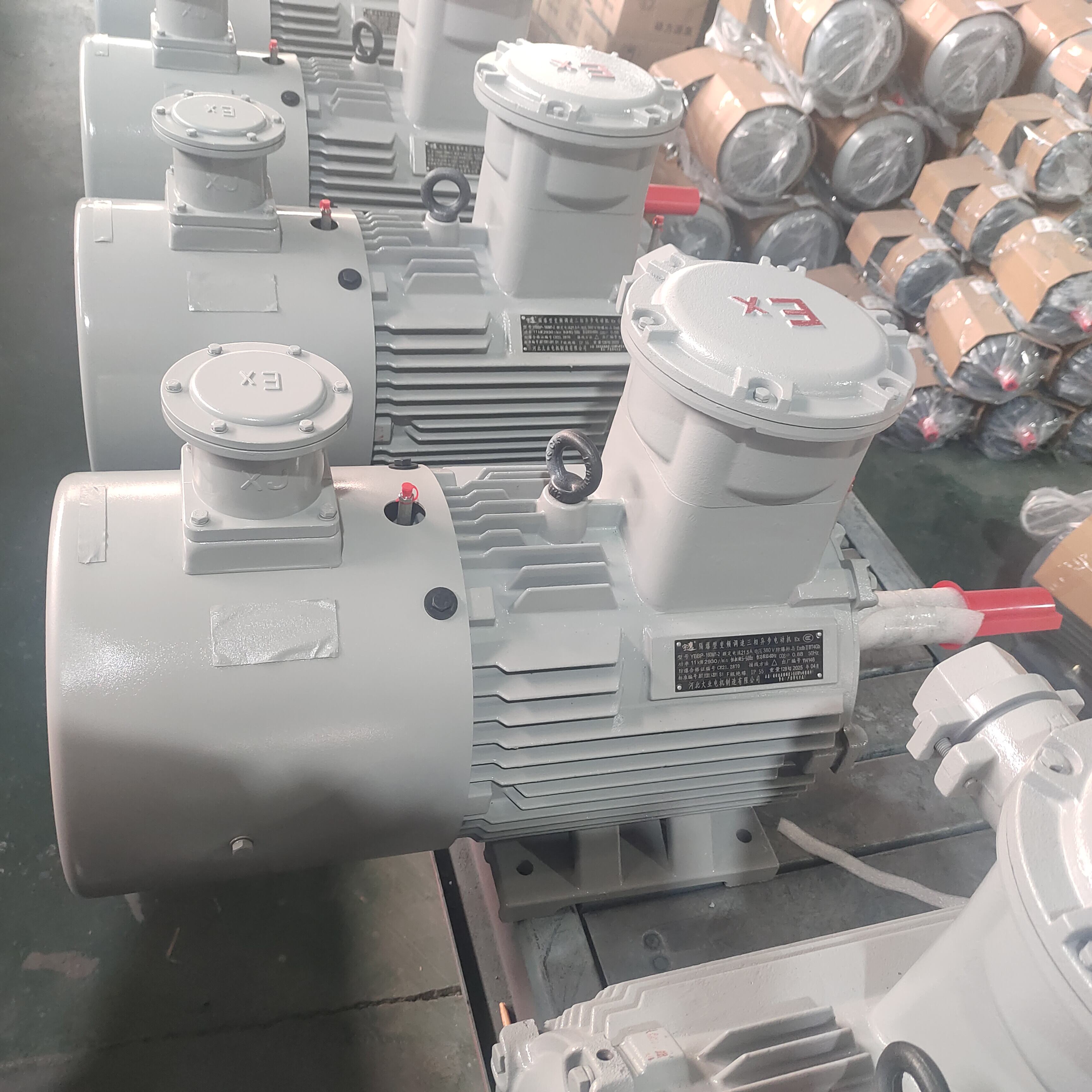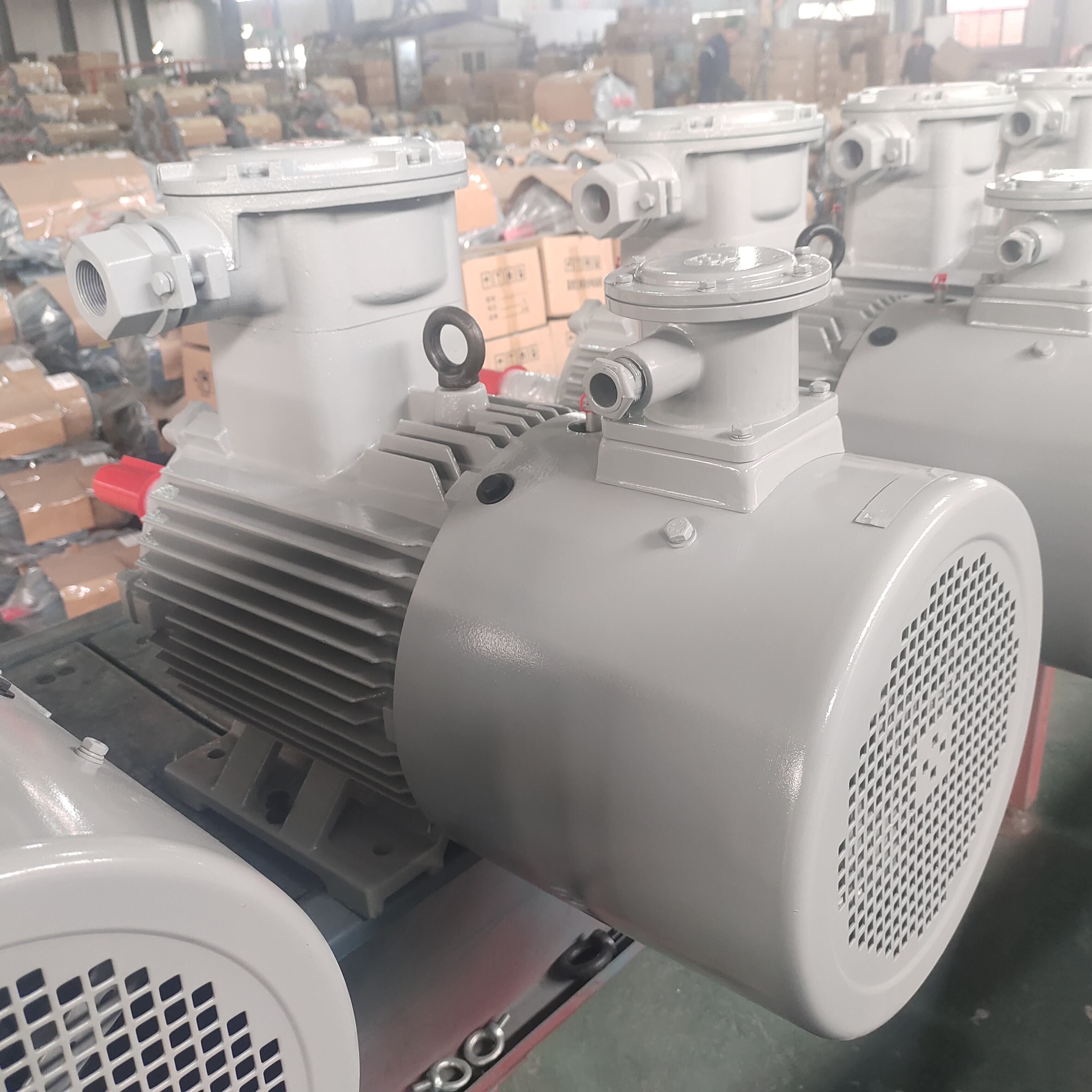Understanding Modern Motor Technology Evolution
The industrial landscape has witnessed a remarkable transformation in motor technology over the past decades. At the forefront of this evolution stands the variable frequency motor, a sophisticated piece of engineering that has revolutionized how we approach motor applications across various industries. These advanced motors offer unprecedented control over speed and torque, marking a significant departure from conventional motor systems.
In today's competitive manufacturing environment, choosing between a variable frequency motor and a standard motor can significantly impact operational efficiency, energy consumption, and overall production costs. As industries increasingly prioritize energy efficiency and precise control, understanding these differences becomes crucial for making informed decisions about motor implementation.
Core Operating Principles and Mechanisms
Variable Frequency Motor Technology
A variable frequency motor operates through a sophisticated system that allows for precise control of motor speed and torque. The heart of this system lies in its ability to modify the frequency of the power supply, directly influencing the motor's rotational speed. This technology employs advanced power electronics to convert the fixed frequency and voltage of the power supply into variable parameters.
The variable frequency motor system consists of several key components, including a rectifier that converts AC power to DC, a DC bus that stores and filters the power, and an inverter that creates the variable frequency output. This arrangement enables smooth speed control and optimal performance across different operating conditions.
Standard Motor Operations
Standard motors, in contrast, operate at fixed speeds determined by the power supply frequency and the number of poles in the motor's design. These motors typically run at constant speeds and rely on mechanical means for any speed adjustments. While simpler in construction, they offer limited control options and often require additional components for speed variation.
The fundamental difference lies in their power delivery method. Standard motors draw power directly from the supply line, operating at full voltage from the start, which can lead to high inrush currents and mechanical stress during startup.

Performance and Efficiency Comparisons
Speed Control Capabilities
When it comes to speed control, the variable frequency motor demonstrates superior flexibility. It can operate efficiently across a wide speed range, typically from zero to above base speed, while maintaining constant torque. This precise control allows for optimization of processes and reduced mechanical stress on the system.
The ability to adjust speed electronically rather than mechanically results in smoother operation and fewer wear-related issues. This feature particularly benefits applications requiring frequent speed changes or precise speed maintenance under varying loads.
Energy Consumption Patterns
Energy efficiency represents one of the most significant advantages of variable frequency motor systems. By matching motor speed to load requirements, these motors can reduce energy consumption by 30-50% compared to standard motors in variable torque applications. The energy savings are particularly pronounced in applications like pumps and fans, where power consumption varies with the cube of speed.
Standard motors, running at fixed speeds, often require mechanical means of flow control such as dampers or throttling valves, which waste energy. The variable frequency motor eliminates this inefficiency by directly controlling motor speed to match system requirements.
Application Specific Benefits
Industrial Process Control
In industrial applications, variable frequency motor systems provide unprecedented control over manufacturing processes. They excel in applications requiring precise speed control, such as conveyor systems, machine tools, and production lines. The ability to gradually accelerate and decelerate also reduces mechanical stress and maintenance requirements.
The enhanced control capabilities of variable frequency motor systems allow for improved product quality and increased production flexibility. They can easily adapt to different production requirements without mechanical adjustments, reducing downtime and increasing overall efficiency.
HVAC and Pump Applications
The HVAC industry has particularly benefited from variable frequency motor technology. These systems can precisely match cooling or heating output to building demands, resulting in superior comfort control and significant energy savings. The soft start capability also extends equipment life by reducing mechanical and electrical stress during startup.
In pumping applications, variable frequency motor systems eliminate the need for throttling valves and bypass systems, leading to simpler, more efficient installations. They also provide better pressure control and reduce water hammer effects in piping systems.
Economic Considerations and ROI
Initial Investment Analysis
While variable frequency motor systems typically require a higher initial investment compared to standard motors, the long-term benefits often justify the cost. The initial price difference includes not only the motor itself but also the necessary control equipment and installation costs.
However, when evaluating the total cost of ownership, factors such as energy savings, reduced maintenance requirements, and improved process control must be considered. In many cases, the payback period for a variable frequency motor system can be as short as 6-18 months.
Long-term Cost Benefits
The long-term economic advantages of variable frequency motor systems extend beyond energy savings. These benefits include reduced maintenance costs, longer equipment life, and improved process efficiency. The ability to soft start and stop also reduces wear on mechanical components, leading to fewer replacements and repairs.
Additionally, the improved control capabilities can lead to increased production quality and reduced waste, contributing to overall operational cost savings. Many facilities report significant reductions in their maintenance budgets after switching to variable frequency motor systems.
Frequently Asked Questions
What maintenance requirements do variable frequency motors have compared to standard motors?
Variable frequency motors typically require less mechanical maintenance due to reduced stress during operation. However, they do need regular inspection of electronic components and cooling systems. The control equipment should be kept clean and well-ventilated, and electrical connections should be checked periodically for tightness.
How do variable frequency motors handle power quality issues?
Variable frequency motors are equipped with sophisticated electronics that can help mitigate power quality issues. They can often continue operating effectively during minor voltage fluctuations and can protect the motor from harmful electrical conditions. However, they may require additional filtering or protection in environments with severe power quality problems.
Can existing standard motors be converted to variable frequency operation?
Most standard motors can be converted to variable frequency operation by adding a variable frequency drive (VFD). However, the motor should be evaluated for compatibility, particularly regarding insulation class and bearing types. Some older motors may require additional modifications or may not be suitable for variable frequency operation.


